For One Lifelong Fan, ‘Barbie’ Had an Incredible, Unexpected Emotional Power
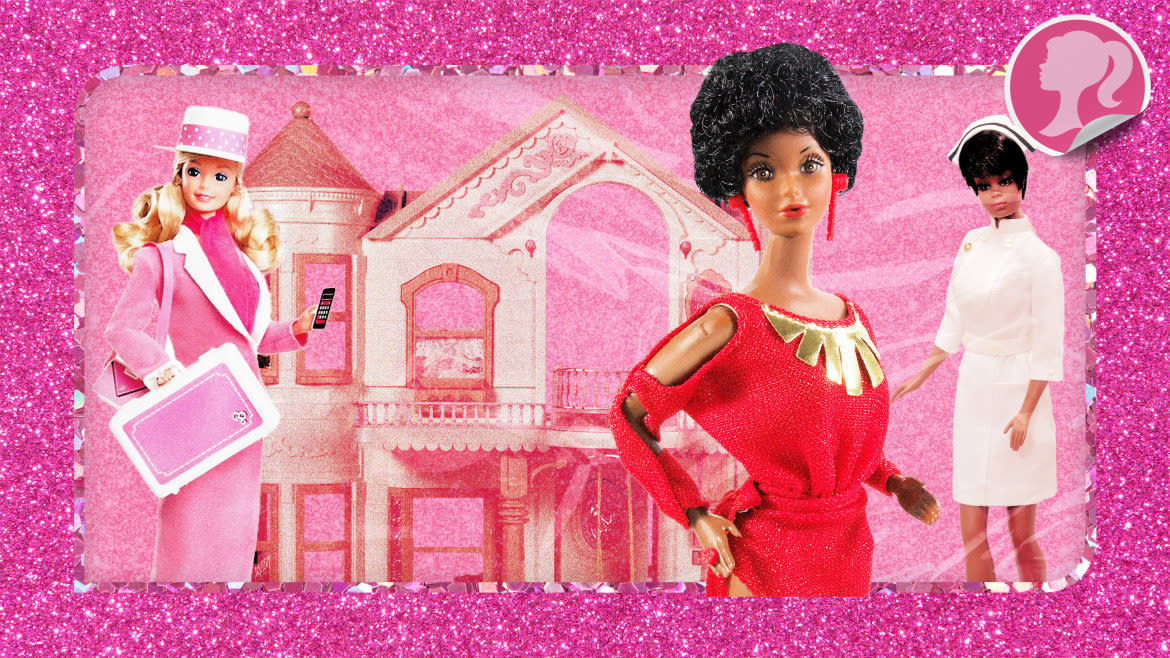
Growing up feeling displaced takes a toll. Despite their age, the child may never feel good enough to be an adult and may never feel righteous enough to have any commonality with peers. The child may think they’re a burden to their parents, like a pariah who needs extra effort and resources to be taken care of. Then, the kid moves forward in life, compromising their emotional comfort just to make it easier for others around them.
Throughout that entire journey, it’s as if they’re trying to find their true self.
At 35 years old, I still feel like that same outcast searching for acceptance, and seeing Barbie opening day gave me a reality check of who I am, where I came from, and who I still dream of becoming. As a first-generation Black woman college graduate, I know I have made strides other women in my family haven’t. But there’s still something within me that keeps me starving to want more in life, to expect the same things I wanted as a kid when I first discovered Barbie and before Pandora’s Box of life tainted my optimism.
I loved the 11-and-a-half-inch dolls as a little girl in the early ’90s, living in southeastern Kentucky. When I got my first few Barbies at about 3 years old, I had no idea where they came from or from what magical pink-hued boxes they originated. Midge had purple earrings and freckles speckled across her nose like mine. Asha’s hair texture flowed like my hair, and my mom was very proud that she found her—and, later, Jamal of the same Shanti doll line, a Barbie sub-brand of Black characters. Out of all of Barbie’s friends, I tended to collect Teresa dolls, because I could physically relate to her ethnic ambiguity. (She and my mom also shared names.) Ken somehow appeared in my collection but suffered a leg injury during a battle with my brother’s G.I. Joes.
A pink Western camper took the dolls on adventures around my parents’ house, while my brother’s G.I. Joes managed to finesse my Barbies’ white Ferrari. Eventually, I had a pool with a slide for my Barbie village, a family friend designed a custom Barbie bed for my dolls, and my parents gifted me a Power Wheels-brand, kid-sized pink Corvette for Christmas.
Lights and Lace Barbie allowed me to explore multi-dimensional fashion; Rappin’ Rockin’ Teresa reminded me of the Fly Girls on In Living Color (including the yellow boombox that played actual music); and Paint and Dazzle Barbie told me to find and design my own style.
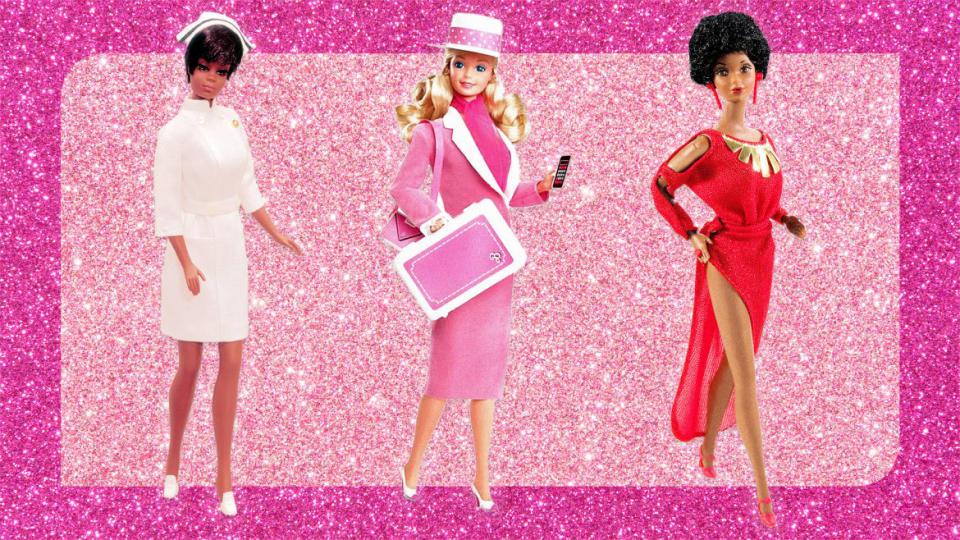
(L to R): 1969 Julia, 1985 Day to Night Barbie, 1980 Black Barbie
Disney princess dolls, Barbies with hats, dolls that could talk, even the mini dolls gifted in McDonald’s Happy Meals—I was obsessed. I was a creative kid who loved to orchestrate imaginative worlds that adhered to my sense of utopia, and I wouldn’t let my mom play with me because she interfered with that fantasy. (Besides, her “Barbie voice” was annoying, and I told her as much. )
My world was disrupted when I was 6 and my parents divorced. My mom and I moved to another city, leaving my brother and dad behind, and eventually I got a stepfather. I turned very inward; I was the only Black girl in my new neighborhood and one of just a sprinkle in my new school. I didn’t spend as much time with my dad anymore, and I found out he’d got rid of my Barbie Corvette when I went back to visit one weekend. I became privy to things from a messy split that I should’ve been completely ignorant to, which made me question myself. My parents were always fighting, my brother became angry, and my new step-dad wasn’t welcoming. The only constant I had, at that time, was my dolls.
Barbie helped me make friends during those heavy transitions, when I felt like an afterthought to the rest of my family. There were vicious arguments between parents and kids, drunken rages, ill-placed blame, and physical fights where I was at the center. Emotionally, I can’t say I always had an easy childhood, but my own Barbie world managed to make it better.
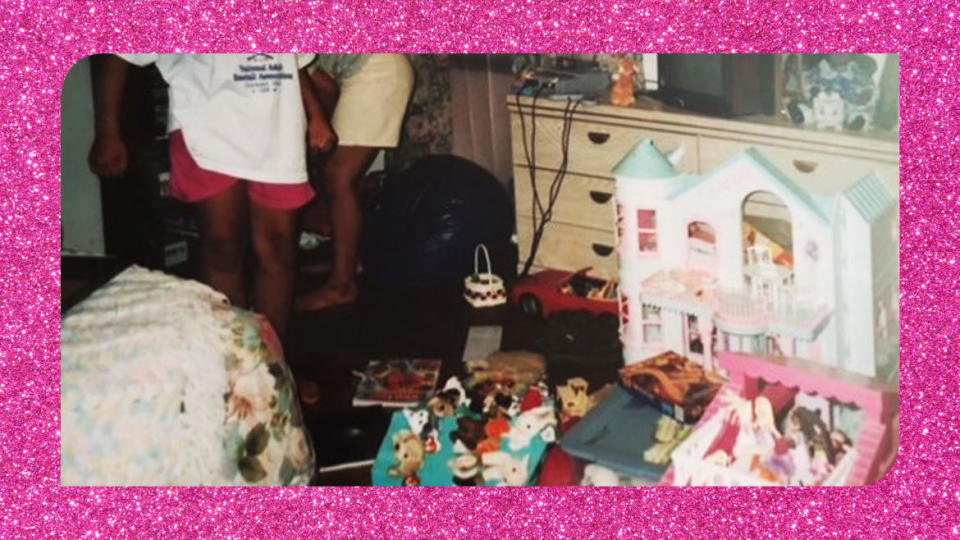
Barbie reminded me of that younger version of myself who remained optimistic and dreamed that anything could be possible in my future, that—even as a child—I held myself to standards to outlive the heartbreak I experienced. But it also reminded me of the heartache I felt when I was so young and put up an emotional wall as a coping mechanism.
When Barbie (Margot Robbie) ventures to the real world to discover why she’s malfunctioning, she sits on a bench near Venice Beach, just with her thoughts, trying to be in tune with the environment around her to gain the information she needs to find the little girl who she thinks needs to be saved. At that moment, she experiences deep emotion for the first time. Images of a distraught girl and mother bring Barbie to tears. She breaks from her trance and tells the older woman she suddenly finds sitting next to her that she’s beautiful.
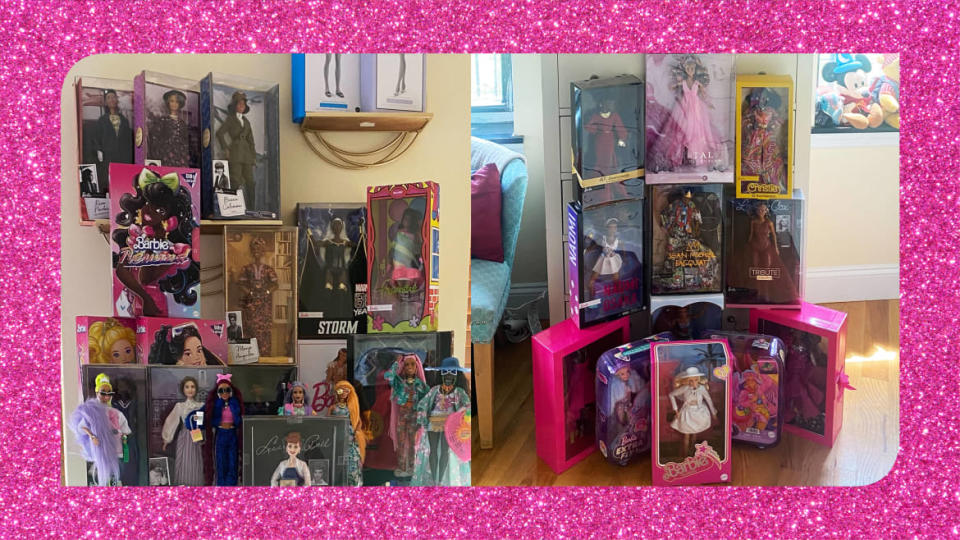
Immediately, I cried. I felt Barbie’s tears as my own. Life throws punches, hard ones; punches I felt like would knock me out for a lifetime. So many times, I felt like I never belonged, like I wasn’t pretty enough, smart enough, classy enough. I had moments when I had countless suicide ideations and felt life would just be better if I didn’t exist, moments when I felt like I wasn’t meant to succeed and thought it would just be easier if I stopped trying. Thankfully, with a system of reminders, I’ve managed to recover. Regardless of my dysfunctional family and ensuing issues with low self-esteem and bouts of isolation, I made it somewhere. I’m not going to lie: It’s still hard. But I survived periods that my mind has chosen to block out as a form of protection.
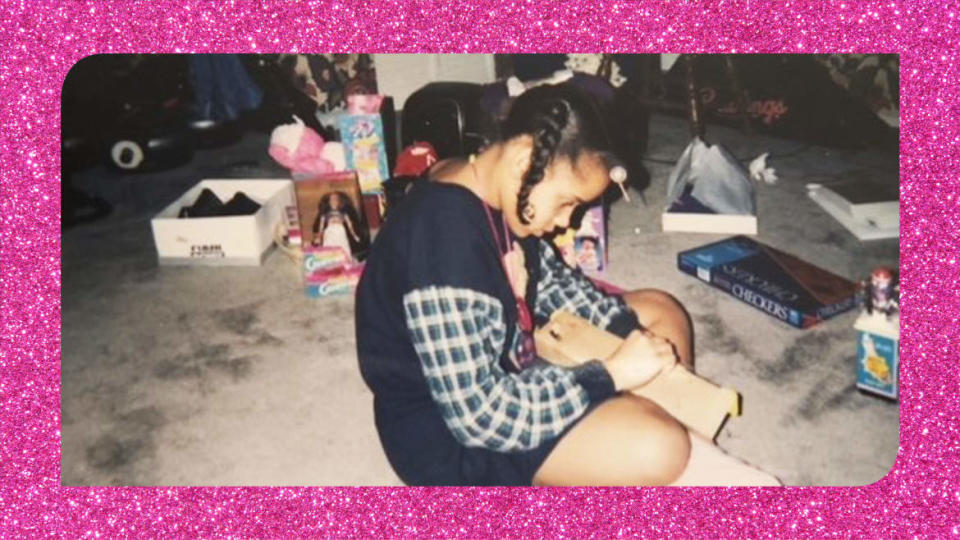
Near the end of Barbie, the title character realizes the world isn’t as it seems. The diverse, feminist, glamorous, democratic Barbieland does not exist in real life. Understanding that, she knows that her duties now fall outside of the Mattel-created sphere. Instead, she’s needed in the patriarchal real world, where she’ll put in work to make it more Barbie-like, equitable, and multifaceted—where women can be smart and beautiful without having to choose one persona over the other.

1998 Barbie Deluxe Dreamhouse
Again, I burst into tears. The movie played a larger role for me beyond its satirical and political stances. It reminded girls and women like me that the world is never perfect, regardless of the dreams we held onto when we were 5 years old. Instead, there will be changes, and you have to find a way to live in spite of them. But along the way, you can’t lose the essence of what makes you unique, and Barbie was a great reminder.
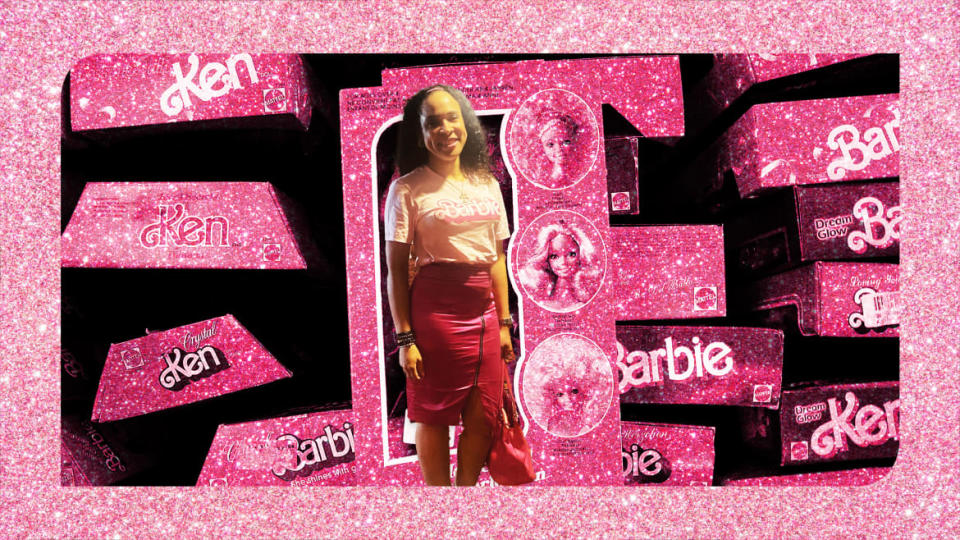
As an adult, I don’t hold back on how meaningful Barbie is to me. Sometimes, we can get so distracted with adulthood that we lose focus on our inner selves, but I happily add to my village of dolls in a way that keeps me authentic to my childhood dreams. The doll was my icon before I could read, and the movie presented a motivating pinkprint for a lifetime.
Read more of our Barbie coverage HERE.
The ‘Barbie’ Movie’s Best Line Honors the Beauty of Older Women
What ‘Barbie’ Critics Are Getting Wrong About Its Big Monologue
‘Barbie’ Gives Us Ryan Gosling at His Peak Musical Powers
Get the Daily Beast's biggest scoops and scandals delivered right to your inbox. Sign up now.
Stay informed and gain unlimited access to the Daily Beast's unmatched reporting. Subscribe now.

 Yahoo News
Yahoo News 
